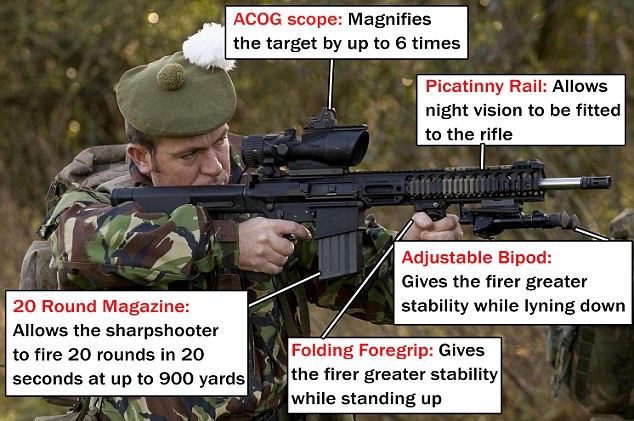DrSomnath999
SENIOR MEMBER

- Joined
- Sep 1, 2011
- Messages
- 2,428
- Reaction score
- 4
- Country
- Location
10.CHALLENGER 2 MBT TANK
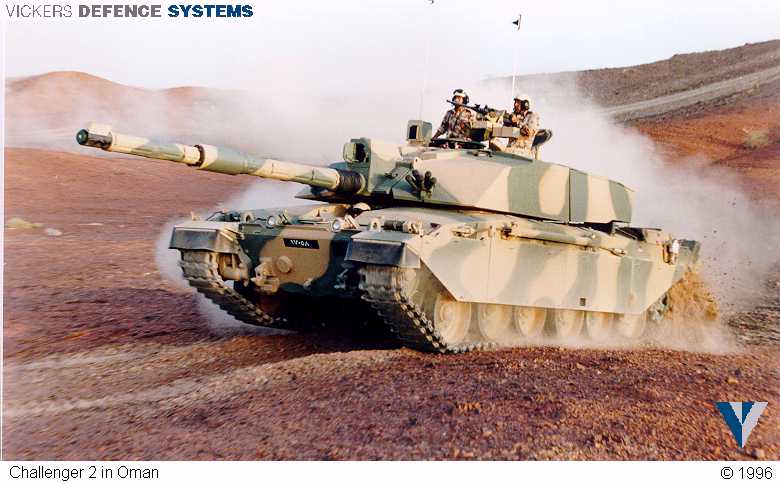
The Challenger 2 is one of the most advanced main battle tanks the world. Currently it is in service with the British Army and the Royal Army of Oman. UK Army ordered 386 tanks since 1991 with the last MBT being delivered in 2002, while Oman operates approximately 38 Challenger 2E main battle tanks. Some other countries, including Greece, Saudi Arabia and Qatar have shown interest to purchase this MBT. The Challenger 2E was developed purely for export and has some certain systems and parts downgraded.
The Challenger 2 is a tough MBT, protected by a highly advanced Chobham armor. It is armed with an L30 smoothbore 120-mm tank gun. In 2006 Some vehicles were fitted for trial purposes with the Rheinmetall L55 120-mm smoothbore gun, similar to than on Leopard 2A6. Challenger combat load consists from 50 projectiles, including armor-piercing, high explosive squash head, or smoke. The L30 gun can fire depleted uranium rounds. New depleted uranium projectile is currently under development. It will be longer and will have increased penetration comparing with the older one.
This main battle tank has a digital fire control system, that has been developed in Canada and is one of the most accurate fire control systems fitted on the combat vehicle. The Challenger 2 is also a fine example of some of the best gadgets and systems that can be found in a MBT.
Additional armament consists of two 7.62-mm machine guns. On of them is located left from the main gun, while the another one is positioned on the roof for anti-aircraft defense. On the each side of the turret there are 5 L8 smoke grenade dischargers. Furthermore the Challenger 2 can launch a smoke screen by injecting diesel fuel into the engine exhaust.
The Challenger 2 is powered by a Caterpillar CV12 diesel engine, delivering 1 200 horsepower. It has a maximum rod speed in 59 km/h, while the cross-country speed is 40 km/h.
In general the Challenger 2 main battle tank performs well even in harsh climatic conditions all other the world. It's current participation in the peacekeeping missions just proved that this is a superbly reliable vehicle.
9.AIR DEFENCE MISSILES
(i) SEA VIPER/PRINCIPAL ANTI AIR MISSILE SYSTEM (PAAMS)
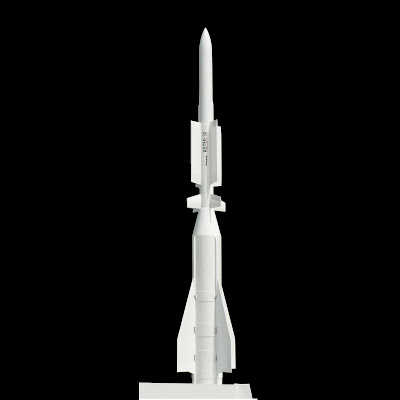
The PAAMS was intended to be deployed in the Horizon CNGF (Common New Generation Frigate) for the navies of the partner nations. The French DGA placed a contract with EUROPAAMS on 11 August 1999 for the development and initial production of the PAAMS and the associated Long Range Radar (LRR) system, including one PAAMS and one LRR for each of the first British, French and Italian Horizon frigates.
Irreconcilable differences in the design requirements led to the UK leaving the Horizon project in October 1999. However, although now pursuing a national warship design (designated the 'Type 45 Destroyer'), the UK remained committed to the PAAMS project. In 2003 the UK ordered five more sets of PAAMS and LRR systems to allow the construction of the six Type 45 Destroyers to progress.
Capabilities
The PAAMS is designed to allow equipped vessels to protect themselves and escorted vessels against missile and aircraft threats. The PAAMS will also be capable of operating close inshore to provide air defence for ground forces, e.g. amphibious landings.
The PAAMS will provide a step change in capability over current systems, e.g. the Type 42's Sea Dart system which is vulnerable to low level and saturation attacks. The PAAMS Aster missiles were designed from the outset to intercept sea-skimming missiles. Utilising the SYLVER launcher, the PAAMS can launch 8 missiles in 10 seconds. Unlike the Sea Dart, however, the PAAMS has no anti-ship capability.
PAAMS components
PAAMS (S) British variant with SAMPSON Multi-Function Radar (MFR)
PAAMS (E) French/Italian variant with EMPAR Multi-Function Radar
Automatic Command and control system
Consoles running Windows 2000 operating system
SYLVER vertical missile launcher
MBDA Aster missiles
Aster 15 - Short range
Aster 30 - Medium to long range
Both variants of the PAAMS operate in conjunction with the BAE Systems Insyte/Thales S1850M Long Range/Early Warning Radar.
(ii)STARSTREAK II,

In mid-2007 Thales UK in Northern Ireland revealed that it had developed Starstreak II, a much improved successor to the Starstreak missile. Some of the advantages included in this new missile are an improved range of 7 kilometres, an improved targeting system and the ability to operate it at much higher altitudes
Variants
(a)LML: Fired from a Lightweight Multiple Launcher (LML) which holds three missiles ready for firing and can be used as either a stationary launch unit or mounted on a light vehicle such as a Land Rover or HMMWV (Humvee).
(b)SP HVM: Carried on an Alvis Stormer AFV with a roof mounted eight round launcher with internal stowage for a further 12 missiles.
Advantages
Starstreak has a number of advantages over infrared guided, radar guided, and radio command MCLOS/SACLOS (Blowpipe or Javelin) missiles:
It cannot be jammed by infrared countermeasures or radar/radio countermeasures.[5]
It cannot be suppressed with anti-radar missiles.[5]
Its high speed makes it more likely to be able to intercept a fast moving aircraft.
Three submunitions increase the size of the lethal area, increasing the probability that the target will be hit by at least one submunition. This is partially reduced by the missile's attack pattern (see disadvantages).
Its high speed reduces the amount of time for effective usage of any potential countermeasure, such as the beam maneuver or illuminating the guidance laser source with an eyesight damaging or dazzling battlefield laser.
It is much quicker reacting than infrared guided systems, with no seeker cooling-down period required.
The guidance laser has a low energy emission-level, making detection & source location more difficult and time-consuming for a laser warning receiver system.
8.FUTURE HELICOPTERS
(i)AGUSTAWESTLAND AW159 LYNX WILDCAT
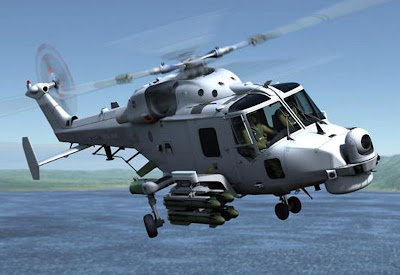
The Wildcat programme will deliver a fleet of 62 new light helicopters for the Army and Royal Navy from 2014 and 2015 respectively
The Army variant of Wildcat will perform a range of tasks on the battlefield including reconnaissance, command and control, transportation of troops and material, and the provision of force protection. With the new Rolls-Royce CTS800-4N engines it will be significantly more powerful than the current Lynx enabling it to operate in extreme hot conditions and high altitudes.
The aircraft will have a high degree of commonality and will be able to switch between Army and Royal Navy roles, principally through the changing of role equipment. Their capability will be a significant advance on that provided in both Iraq and Afghanistan by the current Lynx fleet.
The procurement of the Rolls Royce CTS800-4N engine will also be extended to the existing Lynx Mk9; due to be refitted from 2009 to 2010. The CTS800 Mk 9 (known as the Mk9A) will provide better performance and a much improved light multi role capability in Afghanistan given the extreme environmental conditions.
Both Army and Navy variants are based on a common marinised airframe with a wheeled undercarriage. The Future Lynx is powered by two 1362 shp LHTEC CTS800 turboshaft engines, and features a new composite tailboom, tailplane, tail rotor, nose structure and avionics suite. The naval version is also equipped with a SELEX Galileo Seaspray 7000E active electronically scanned
array (AESA) radar
(ii)AGUSTAWESTLAND APACHE
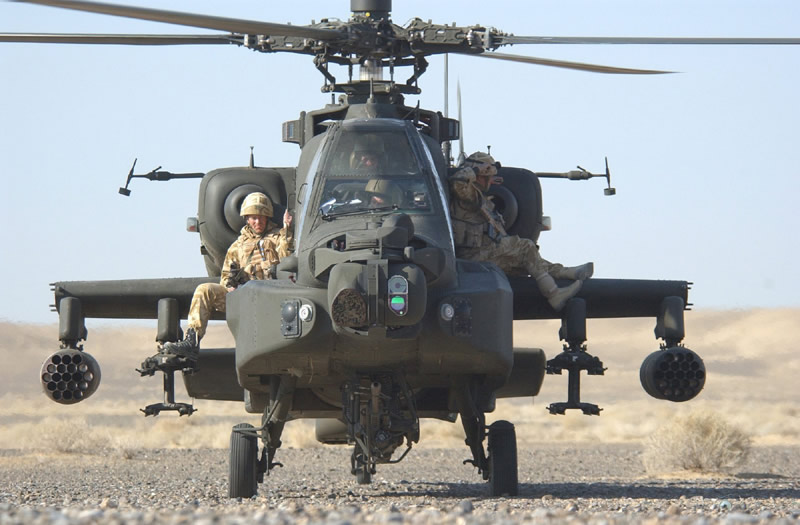
The AgustaWestland Apache is a licence-built version of the Boeing AH-64D Apache Longbow attack helicopter for the British Armys' Army Air Corps. The first eight helicopters were built by Boeing; the remaining 59 were assembled by Westland Helicopters (now part of AgustaWestland) at Yeovil, England from Boeing-supplied kits. Changes from the AH-64D include Rolls-Royce engines, a new electronic defensive aids suite and a folding blade mechanism allowing the British version to operate from ships
Specifications (Apache AH1)
General characteristics
Crew: 2
Length: 17.7 m (58 ft 4 in with rotors turning)
Rotor diameter: 14.6 m (48 ft)
Height: 3.87 m (12 ft 8 in)
Disc area: 168.11 m² (1,809.5 ft²)
Empty weight: 5,165 kg (11,387 lb)
Loaded weight: 8,006 kg (17,650 lb)
Max takeoff weight: 9,525 kg (21,000 lb)
Powerplant: 2× Rolls-Royce/Turbomeca RTM322 turboshaft, 1,566 kW (2,100 hp) each
Performance
Never exceed speed: 365 km/h (197 knots, 227 mph)
Maximum speed: 293 km/h (158 knots, 182 mph)
Cruise speed: 259 km/h (140 knots, 161 mph)
Range: 537 km (290 nmi,[104] 334 mi)
Ferry range: 1,700 km (974 nmi, 1,121 mi)
Service ceiling: 6,400 m (21,000 ft)
Rate of climb: 12.7 m/s (2,500 ft/min)
Armament
Guns: M230 Chain Gun, 1156 rounds
Missiles: Hellfire (and Stinger, Starstreak, Sidewinder/Sidearm proposed)
Rockets: CRV7, Flechette (Tungsten dart) or High-Explosive Incendiary Semi-Armour Piercing (HEISAP
7.AWACS
(i) E-3D SENTRY

The aircraft cruises at 30,000ft and 400kts and its Northrop Grumman AN/APY-2 high-performance, multimode lookdown radar, housed in the black radome, is able to separate airborne and maritime targets from ground and sea clutter. One E-3D flying at 30,000ft can scan at distances of over 300nmls; it can detect low-flying targets or maritime surface contacts within 215nmls and it can detect medium-level airborne targets at ranges in excess of 280nmls. The multi-mode radar provides lookdown surveillance to the radar horizon and an electronic vertical scan of the radar beam provides target elevation and beyond-the-horizon operation for long-range surveillance of medium and high-altitude aircraft. These attributes allow it to determine the location, altitude, course and speed of large numbers of airborne targets. The aircrafts mission systems can separate, manage and display targets individually on situation displays within the aircraft, or it can transmit the information to ground-based and ship-based units using a wide variety of digital data links.
(ii)SENTINEL R1/ASTOR

The Sentinel system consists of Air, Land and Support segments. The Air segment consists of 5 converted Bombardier Global Express aircraft, named the Sentinel R1, fitted with a Dual Mode Radar (DMR). This radar is similar to the U2 ASARS radar, and collects SAR imagery and GMTI data. The Land segment consists of 2 transportable Operational Level Ground Stations (OLGS) and 6 mobile Tactical Ground Stations (TGS). These ground stations (GS) are connected to the aircraft via data links and provide Near Real Time (NRT) intelligence to commanders and their staffs at multiple levels of command.
(iii)BOEING RC-135

The Air Seeker[18] is a SIGINT aircraft for the RAF based on the Boeing RC-135 Rivet Joint aircraft. Three KC-135R aircraft are to be purchased and converted to RC-135W Rivet Joint standard. The cost per airframe is believed to be $330 million.
The Air Seeker is to replace the Nimrod R1 in the signal intelligence role. The Nimrod R1 was scheduled to be retired in March 2011 due to the cost of airframe maintenance and the cancellation of the Project Helix upgrade programme due to escalating costs. However, retirement has since been delayed until at least June 2011.
With delivery of the first Air Seeker to the Royal Air Force not due until 2014, the gap in operational capability will be filled by joint operations between the RAF and USAF's 343d Reconnaissance Squadron.

The Challenger 2 is one of the most advanced main battle tanks the world. Currently it is in service with the British Army and the Royal Army of Oman. UK Army ordered 386 tanks since 1991 with the last MBT being delivered in 2002, while Oman operates approximately 38 Challenger 2E main battle tanks. Some other countries, including Greece, Saudi Arabia and Qatar have shown interest to purchase this MBT. The Challenger 2E was developed purely for export and has some certain systems and parts downgraded.
The Challenger 2 is a tough MBT, protected by a highly advanced Chobham armor. It is armed with an L30 smoothbore 120-mm tank gun. In 2006 Some vehicles were fitted for trial purposes with the Rheinmetall L55 120-mm smoothbore gun, similar to than on Leopard 2A6. Challenger combat load consists from 50 projectiles, including armor-piercing, high explosive squash head, or smoke. The L30 gun can fire depleted uranium rounds. New depleted uranium projectile is currently under development. It will be longer and will have increased penetration comparing with the older one.
This main battle tank has a digital fire control system, that has been developed in Canada and is one of the most accurate fire control systems fitted on the combat vehicle. The Challenger 2 is also a fine example of some of the best gadgets and systems that can be found in a MBT.
Additional armament consists of two 7.62-mm machine guns. On of them is located left from the main gun, while the another one is positioned on the roof for anti-aircraft defense. On the each side of the turret there are 5 L8 smoke grenade dischargers. Furthermore the Challenger 2 can launch a smoke screen by injecting diesel fuel into the engine exhaust.
The Challenger 2 is powered by a Caterpillar CV12 diesel engine, delivering 1 200 horsepower. It has a maximum rod speed in 59 km/h, while the cross-country speed is 40 km/h.
In general the Challenger 2 main battle tank performs well even in harsh climatic conditions all other the world. It's current participation in the peacekeeping missions just proved that this is a superbly reliable vehicle.
9.AIR DEFENCE MISSILES
(i) SEA VIPER/PRINCIPAL ANTI AIR MISSILE SYSTEM (PAAMS)

The PAAMS was intended to be deployed in the Horizon CNGF (Common New Generation Frigate) for the navies of the partner nations. The French DGA placed a contract with EUROPAAMS on 11 August 1999 for the development and initial production of the PAAMS and the associated Long Range Radar (LRR) system, including one PAAMS and one LRR for each of the first British, French and Italian Horizon frigates.
Irreconcilable differences in the design requirements led to the UK leaving the Horizon project in October 1999. However, although now pursuing a national warship design (designated the 'Type 45 Destroyer'), the UK remained committed to the PAAMS project. In 2003 the UK ordered five more sets of PAAMS and LRR systems to allow the construction of the six Type 45 Destroyers to progress.
Capabilities
The PAAMS is designed to allow equipped vessels to protect themselves and escorted vessels against missile and aircraft threats. The PAAMS will also be capable of operating close inshore to provide air defence for ground forces, e.g. amphibious landings.
The PAAMS will provide a step change in capability over current systems, e.g. the Type 42's Sea Dart system which is vulnerable to low level and saturation attacks. The PAAMS Aster missiles were designed from the outset to intercept sea-skimming missiles. Utilising the SYLVER launcher, the PAAMS can launch 8 missiles in 10 seconds. Unlike the Sea Dart, however, the PAAMS has no anti-ship capability.
PAAMS components
PAAMS (S) British variant with SAMPSON Multi-Function Radar (MFR)
PAAMS (E) French/Italian variant with EMPAR Multi-Function Radar
Automatic Command and control system
Consoles running Windows 2000 operating system
SYLVER vertical missile launcher
MBDA Aster missiles
Aster 15 - Short range
Aster 30 - Medium to long range
Both variants of the PAAMS operate in conjunction with the BAE Systems Insyte/Thales S1850M Long Range/Early Warning Radar.
(ii)STARSTREAK II,
In mid-2007 Thales UK in Northern Ireland revealed that it had developed Starstreak II, a much improved successor to the Starstreak missile. Some of the advantages included in this new missile are an improved range of 7 kilometres, an improved targeting system and the ability to operate it at much higher altitudes
Variants
(a)LML: Fired from a Lightweight Multiple Launcher (LML) which holds three missiles ready for firing and can be used as either a stationary launch unit or mounted on a light vehicle such as a Land Rover or HMMWV (Humvee).
(b)SP HVM: Carried on an Alvis Stormer AFV with a roof mounted eight round launcher with internal stowage for a further 12 missiles.
Advantages
Starstreak has a number of advantages over infrared guided, radar guided, and radio command MCLOS/SACLOS (Blowpipe or Javelin) missiles:
It cannot be jammed by infrared countermeasures or radar/radio countermeasures.[5]
It cannot be suppressed with anti-radar missiles.[5]
Its high speed makes it more likely to be able to intercept a fast moving aircraft.
Three submunitions increase the size of the lethal area, increasing the probability that the target will be hit by at least one submunition. This is partially reduced by the missile's attack pattern (see disadvantages).
Its high speed reduces the amount of time for effective usage of any potential countermeasure, such as the beam maneuver or illuminating the guidance laser source with an eyesight damaging or dazzling battlefield laser.
It is much quicker reacting than infrared guided systems, with no seeker cooling-down period required.
The guidance laser has a low energy emission-level, making detection & source location more difficult and time-consuming for a laser warning receiver system.
8.FUTURE HELICOPTERS
(i)AGUSTAWESTLAND AW159 LYNX WILDCAT

The Wildcat programme will deliver a fleet of 62 new light helicopters for the Army and Royal Navy from 2014 and 2015 respectively
The Army variant of Wildcat will perform a range of tasks on the battlefield including reconnaissance, command and control, transportation of troops and material, and the provision of force protection. With the new Rolls-Royce CTS800-4N engines it will be significantly more powerful than the current Lynx enabling it to operate in extreme hot conditions and high altitudes.
The aircraft will have a high degree of commonality and will be able to switch between Army and Royal Navy roles, principally through the changing of role equipment. Their capability will be a significant advance on that provided in both Iraq and Afghanistan by the current Lynx fleet.
The procurement of the Rolls Royce CTS800-4N engine will also be extended to the existing Lynx Mk9; due to be refitted from 2009 to 2010. The CTS800 Mk 9 (known as the Mk9A) will provide better performance and a much improved light multi role capability in Afghanistan given the extreme environmental conditions.
Both Army and Navy variants are based on a common marinised airframe with a wheeled undercarriage. The Future Lynx is powered by two 1362 shp LHTEC CTS800 turboshaft engines, and features a new composite tailboom, tailplane, tail rotor, nose structure and avionics suite. The naval version is also equipped with a SELEX Galileo Seaspray 7000E active electronically scanned
array (AESA) radar
(ii)AGUSTAWESTLAND APACHE

The AgustaWestland Apache is a licence-built version of the Boeing AH-64D Apache Longbow attack helicopter for the British Armys' Army Air Corps. The first eight helicopters were built by Boeing; the remaining 59 were assembled by Westland Helicopters (now part of AgustaWestland) at Yeovil, England from Boeing-supplied kits. Changes from the AH-64D include Rolls-Royce engines, a new electronic defensive aids suite and a folding blade mechanism allowing the British version to operate from ships
Specifications (Apache AH1)
General characteristics
Crew: 2
Length: 17.7 m (58 ft 4 in with rotors turning)
Rotor diameter: 14.6 m (48 ft)
Height: 3.87 m (12 ft 8 in)
Disc area: 168.11 m² (1,809.5 ft²)
Empty weight: 5,165 kg (11,387 lb)
Loaded weight: 8,006 kg (17,650 lb)
Max takeoff weight: 9,525 kg (21,000 lb)
Powerplant: 2× Rolls-Royce/Turbomeca RTM322 turboshaft, 1,566 kW (2,100 hp) each
Performance
Never exceed speed: 365 km/h (197 knots, 227 mph)
Maximum speed: 293 km/h (158 knots, 182 mph)
Cruise speed: 259 km/h (140 knots, 161 mph)
Range: 537 km (290 nmi,[104] 334 mi)
Ferry range: 1,700 km (974 nmi, 1,121 mi)
Service ceiling: 6,400 m (21,000 ft)
Rate of climb: 12.7 m/s (2,500 ft/min)
Armament
Guns: M230 Chain Gun, 1156 rounds
Missiles: Hellfire (and Stinger, Starstreak, Sidewinder/Sidearm proposed)
Rockets: CRV7, Flechette (Tungsten dart) or High-Explosive Incendiary Semi-Armour Piercing (HEISAP
7.AWACS
(i) E-3D SENTRY

The aircraft cruises at 30,000ft and 400kts and its Northrop Grumman AN/APY-2 high-performance, multimode lookdown radar, housed in the black radome, is able to separate airborne and maritime targets from ground and sea clutter. One E-3D flying at 30,000ft can scan at distances of over 300nmls; it can detect low-flying targets or maritime surface contacts within 215nmls and it can detect medium-level airborne targets at ranges in excess of 280nmls. The multi-mode radar provides lookdown surveillance to the radar horizon and an electronic vertical scan of the radar beam provides target elevation and beyond-the-horizon operation for long-range surveillance of medium and high-altitude aircraft. These attributes allow it to determine the location, altitude, course and speed of large numbers of airborne targets. The aircrafts mission systems can separate, manage and display targets individually on situation displays within the aircraft, or it can transmit the information to ground-based and ship-based units using a wide variety of digital data links.
(ii)SENTINEL R1/ASTOR

The Sentinel system consists of Air, Land and Support segments. The Air segment consists of 5 converted Bombardier Global Express aircraft, named the Sentinel R1, fitted with a Dual Mode Radar (DMR). This radar is similar to the U2 ASARS radar, and collects SAR imagery and GMTI data. The Land segment consists of 2 transportable Operational Level Ground Stations (OLGS) and 6 mobile Tactical Ground Stations (TGS). These ground stations (GS) are connected to the aircraft via data links and provide Near Real Time (NRT) intelligence to commanders and their staffs at multiple levels of command.
(iii)BOEING RC-135

The Air Seeker[18] is a SIGINT aircraft for the RAF based on the Boeing RC-135 Rivet Joint aircraft. Three KC-135R aircraft are to be purchased and converted to RC-135W Rivet Joint standard. The cost per airframe is believed to be $330 million.
The Air Seeker is to replace the Nimrod R1 in the signal intelligence role. The Nimrod R1 was scheduled to be retired in March 2011 due to the cost of airframe maintenance and the cancellation of the Project Helix upgrade programme due to escalating costs. However, retirement has since been delayed until at least June 2011.
With delivery of the first Air Seeker to the Royal Air Force not due until 2014, the gap in operational capability will be filled by joint operations between the RAF and USAF's 343d Reconnaissance Squadron.




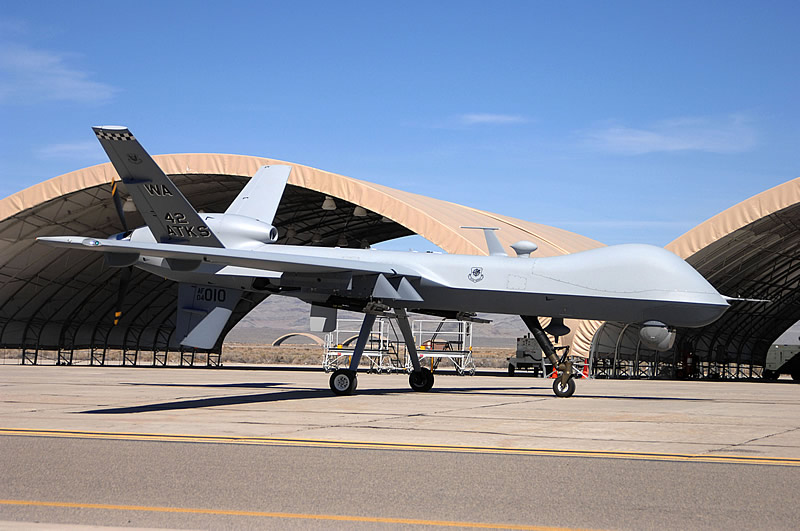


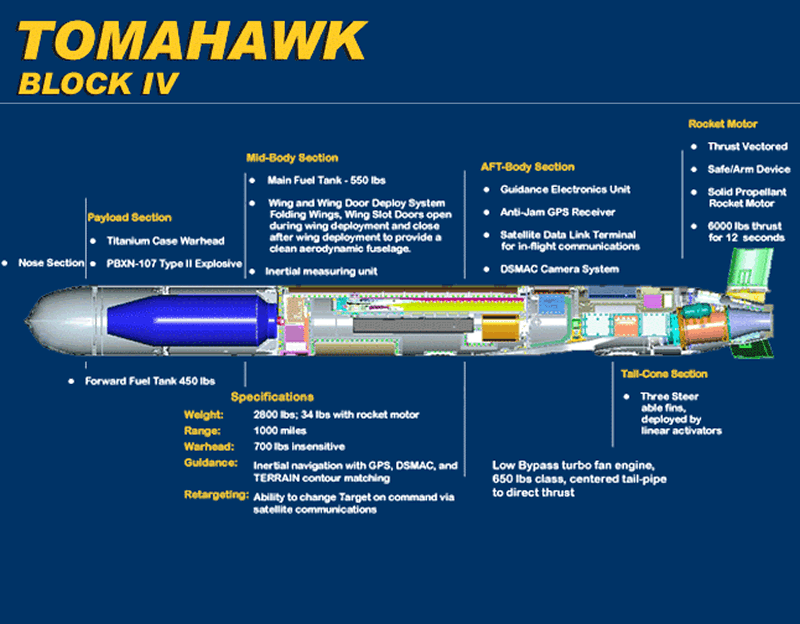







 WELL ,what poll i should make for this thread ,
WELL ,what poll i should make for this thread ,
 .Well i assure u my thread are all of one of a kind
.Well i assure u my thread are all of one of a kind










